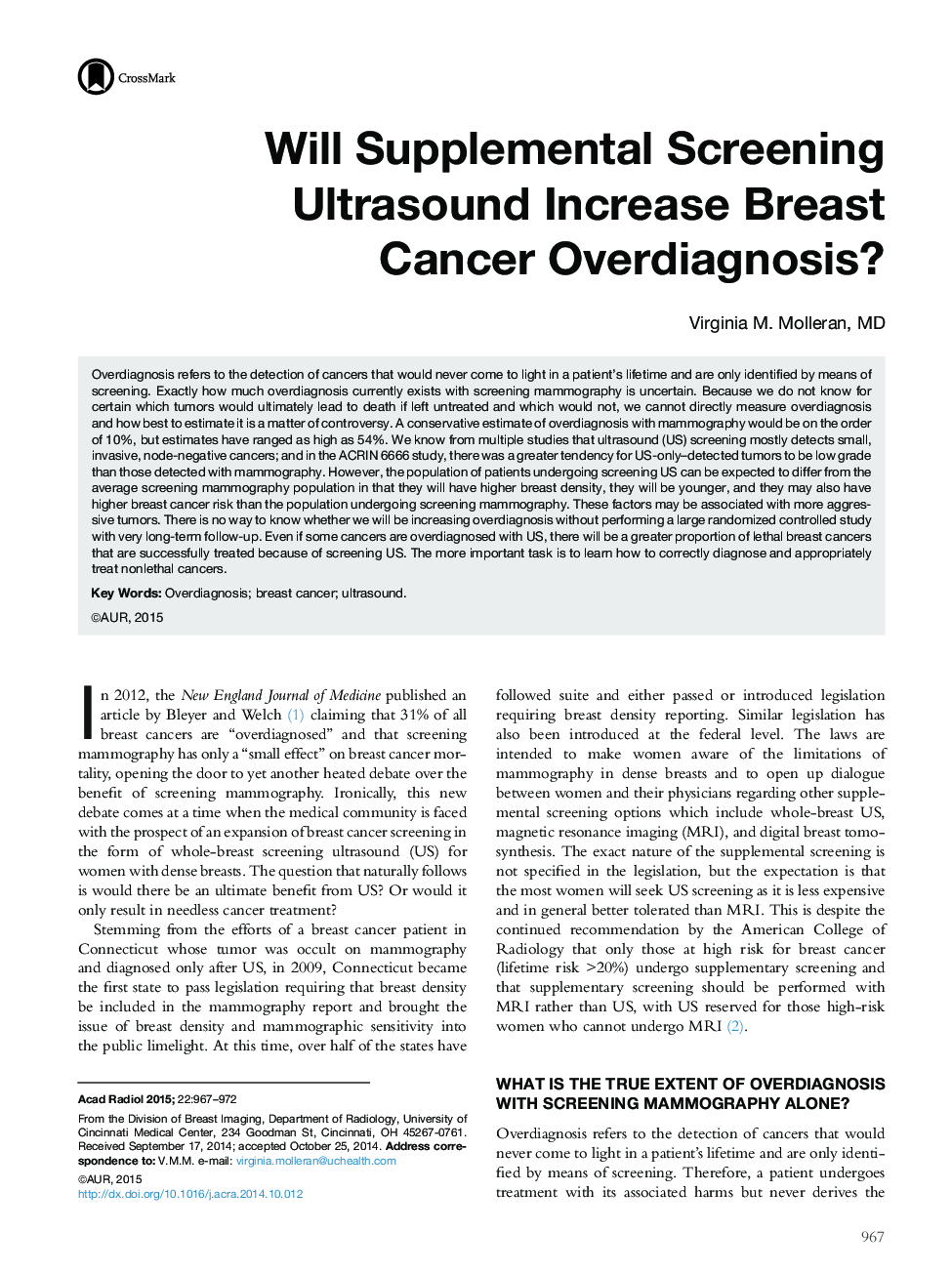| Article ID | Journal | Published Year | Pages | File Type |
|---|---|---|---|---|
| 4217969 | Academic Radiology | 2015 | 6 Pages |
Abstract
Overdiagnosis refers to the detection of cancers that would never come to light in a patient's lifetime and are only identified by means of screening. Exactly how much overdiagnosis currently exists with screening mammography is uncertain. Because we do not know for certain which tumors would ultimately lead to death if left untreated and which would not, we cannot directly measure overdiagnosis and how best to estimate it is a matter of controversy. A conservative estimate of overdiagnosis with mammography would be on the order of 10%, but estimates have ranged as high as 54%. We know from multiple studies that ultrasound (US) screening mostly detects small, invasive, node-negative cancers; and in the ACRIN 6666 study, there was a greater tendency for US-only-detected tumors to be low grade than those detected with mammography. However, the population of patients undergoing screening US can be expected to differ from the average screening mammography population in that they will have higher breast density, they will be younger, and they may also have higher breast cancer risk than the population undergoing screening mammography. These factors may be associated with more aggressive tumors. There is no way to know whether we will be increasing overdiagnosis without performing a large randomized controlled study with very long-term follow-up. Even if some cancers are overdiagnosed with US, there will be a greater proportion of lethal breast cancers that are successfully treated because of screening US. The more important task is to learn how to correctly diagnose and appropriately treat nonlethal cancers.
Keywords
Related Topics
Health Sciences
Medicine and Dentistry
Radiology and Imaging
Authors
Virginia M. MD,
